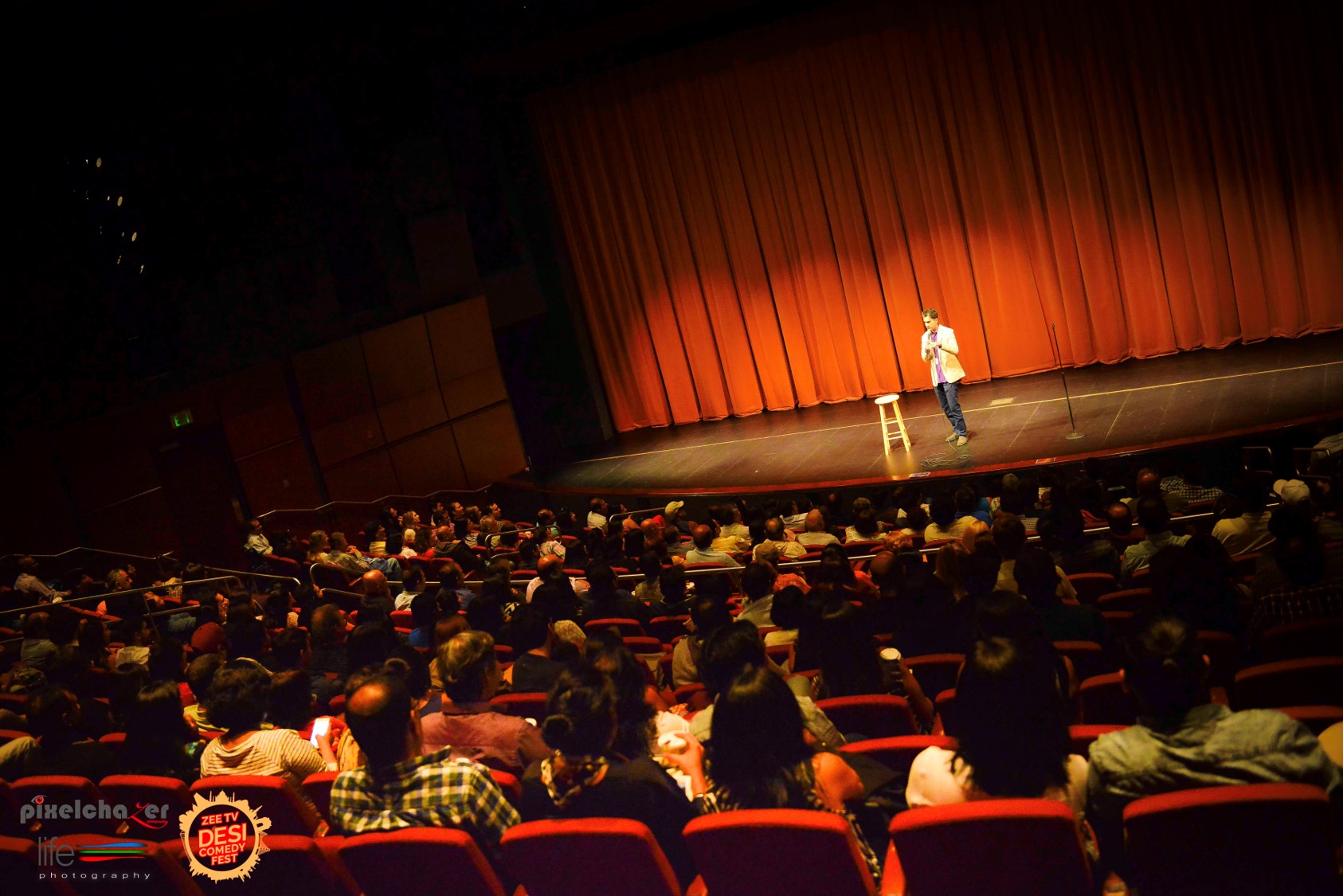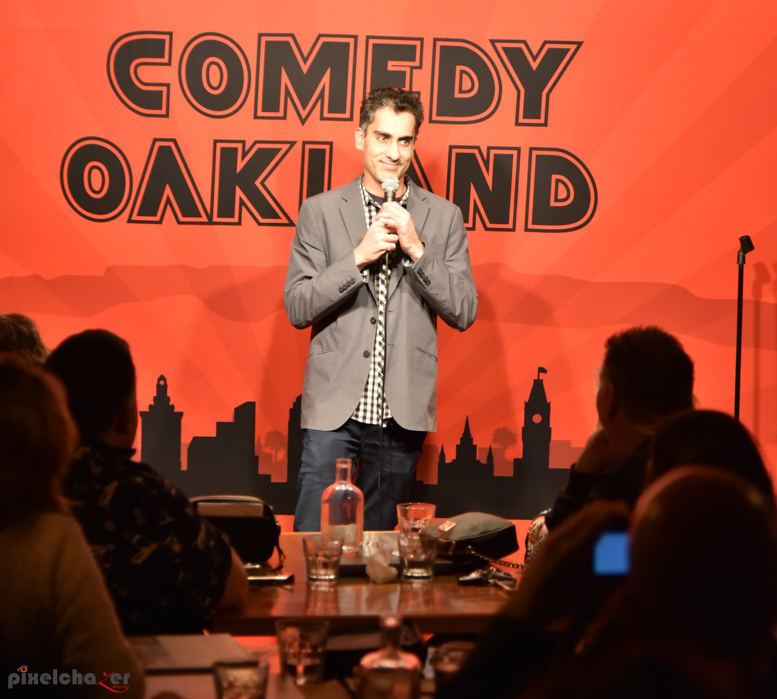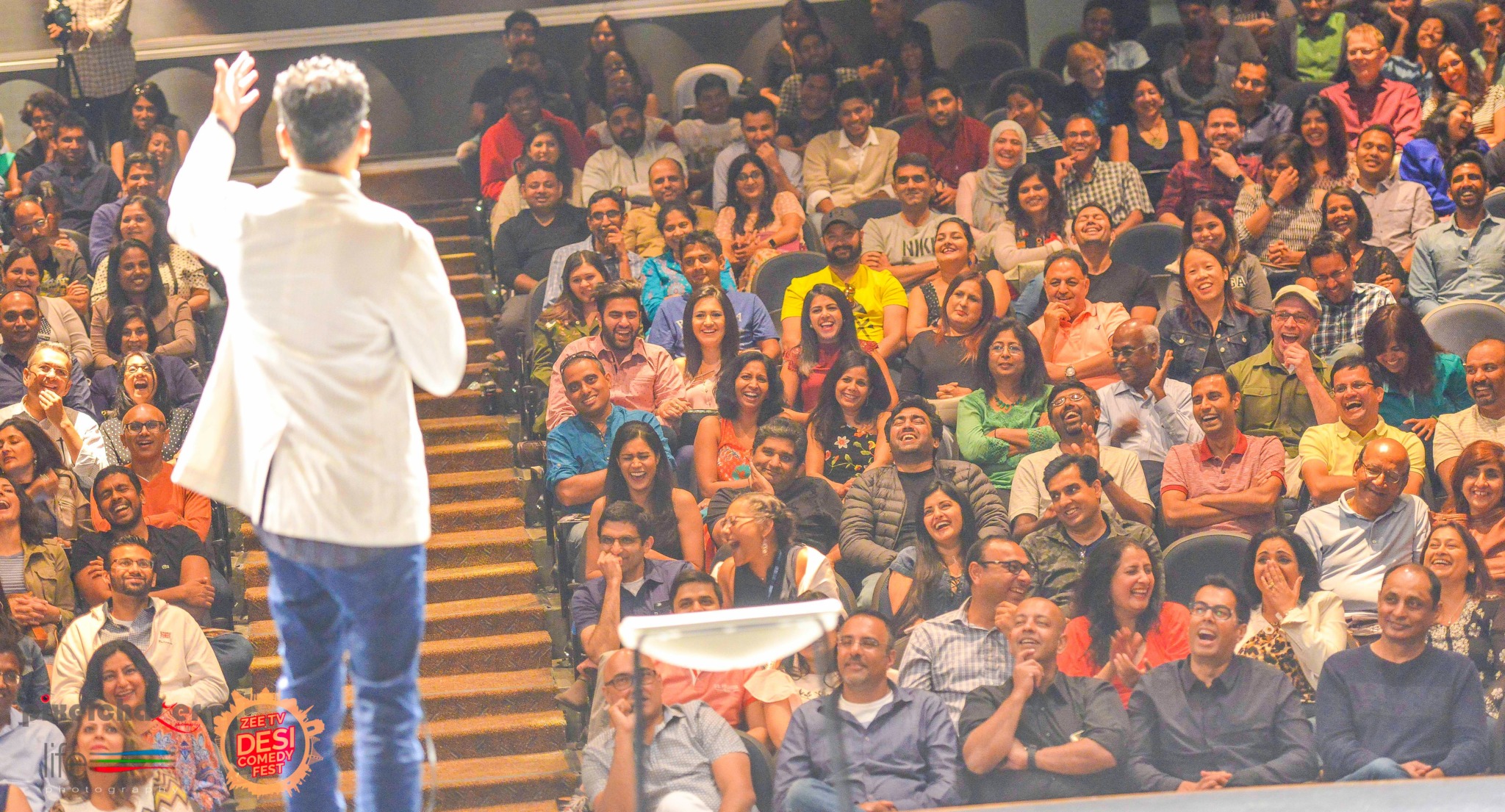Alright – so today we’ve got the honor of introducing you to Samson Koletkar. We think you’ll enjoy our conversation, we’ve shared it below.
Samson, thanks for taking the time to share your stories with us today Can you share a story about the kindest thing someone has done for you and why it mattered so much or was so meaningful to you?
About a year into my stand-up journey, I attended a comedy seminar in New York led by Eddie Brill—then the talent coordinator for Late Show with David Letterman. As part of the workshop, each of us performed a 5-minute set, followed by feedback from both Eddie and the other comics.
During the break, I pulled Eddie aside and admitted that I’d been quiet for most of the session. I told him I didn’t fully understand some of the jokes—mostly because they were packed with American cultural references I wasn’t familiar with. I didn’t feel qualified to give any feedback.
Eddie smiled warmly and said, “Even that is valuable feedback. America is full of people like you. If you don’t understand a joke, that’s important for the comic to know.”
That alone made me feel seen. But then I confessed my bigger fear: “What if Americans can’t relate to my comedy?”
He paused and said something I’ll never forget:
“That’s a good thing. It means you’re not repeating the same old material. You’re bringing something fresh to the table.”
That moment changed everything. My fear—that I was too different—suddenly flipped into confidence. What I thought was a weakness turned out to be my greatest strength. I realized my comedy could offer something new, unconventional, and uniquely mine.
It was a turning point I’ve carried with me ever since. Nineteen years later, I still chase that freshness Eddie encouraged me to embrace. That brief, kind exchange helped me believe in my voice—and I’ve never looked back.
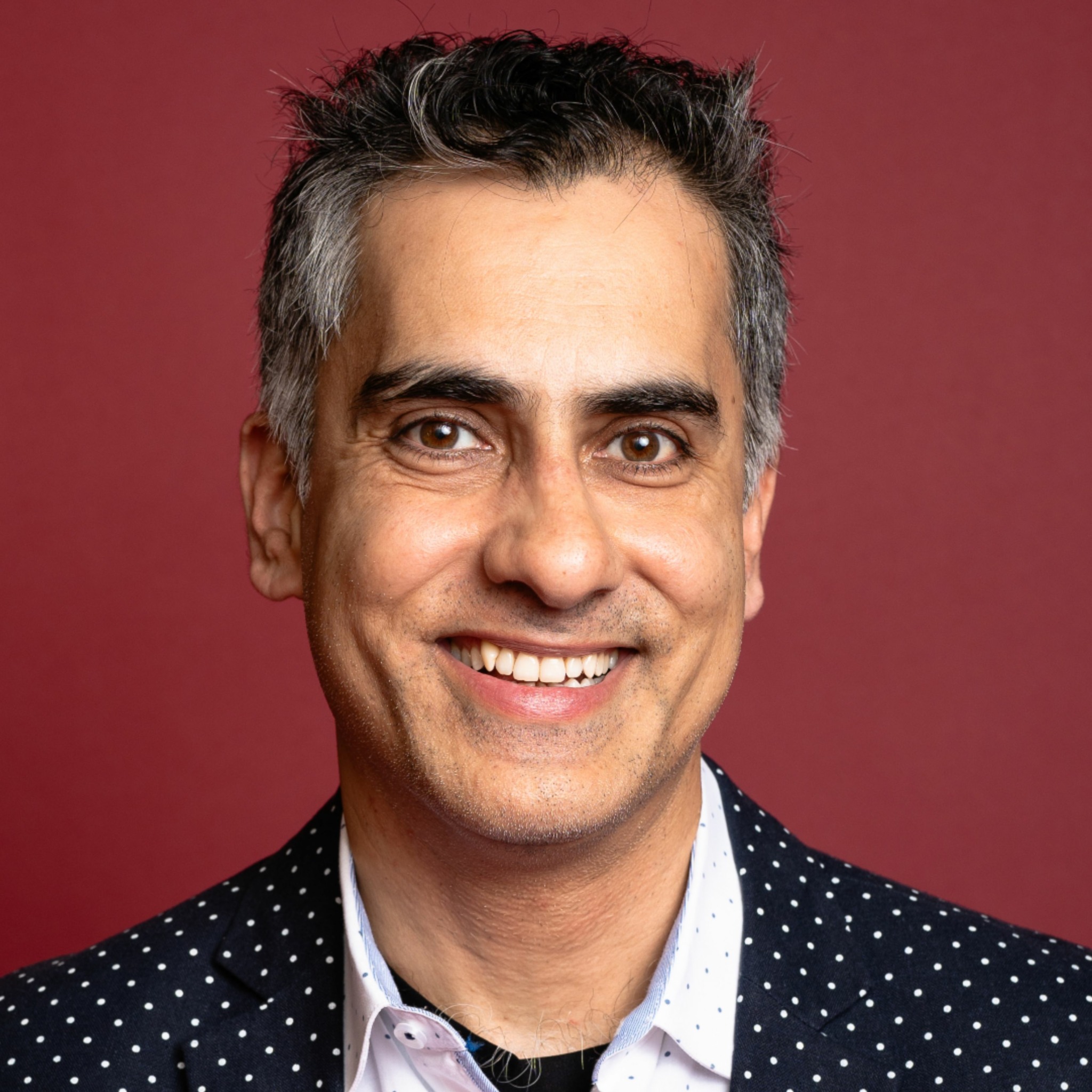
Awesome – so before we get into the rest of our questions, can you briefly introduce yourself to our readers.
My journey into comedy began with a disaster. In kindergarten, my mom helped me rehearse a simple circus act—balancing a hat on a stick—then dressed me up like Charlie Chaplin and walked me backstage. But when my name was called, I froze. Tears poured out. I refused to take a single step onto that stage. After a few attempts to coax me out, the teachers moved on, and my mom took me home—disappointed and furious.
Fast forward to today, I’m a stand-up comedian who has not only overcome the world’s biggest fear—public speaking—but now thrives in it. I went from being the shy, quiet kid who couldn’t step on stage to the performer who has to be dragged off of it.
I grew up in Mumbai, watching comedy artists who specialized in mimicry and impressions. I loved collecting and retelling jokes I heard or read. After college and three years working in Mumbai, I moved to the San Francisco Bay Area. The first couple of years here were lonely and isolating. But I kept sharing my love for comedy, and eventually a friend told me about San Francisco Comedy College. I enrolled immediately. I had no experience and no idea where to begin, but in January 2006, I started performing anywhere that had a mic and an audience—open mics, bars, cafés, bookstores, you name it.
Early on, I made a conscious choice: clean comedy. Other comics said it was harder and more respected—and it felt more authentic to me. Since then, my comedy has been described as cerebral, witty, and clean. It’s taken me across the U.S., Canada, and India, performing at festivals, corporate events, fundraisers, and international tours. The more I’ve done it, the more comedy has become my tool for expressing ideas, challenging norms, and sharing personal truths with humor.
In May 2009, I launched my own weekly showcase to ensure regular stage time. That one show grew into multiple weekly events, and today, Comedy Oakland has been running non-stop for over 16 years—even during the pandemic, when we moved online. The show has won Best Place for Comedy in the East Bay Express Reader’s Poll every year from 2016 to 2023, and the San Francisco Chronicle featured me in a centerfold story titled “India-born Stand-Up Builds Comedy Utopia in Oakland.”
In 2014, I co-founded Desi Comedy Fest, the biggest South Asian comedy festival in the U.S., showcasing hundreds of comedians of South Asian descent across cities in the Bay Area and beyond. The festival has featured at SF SketchFest, Just For Laughs Vancouver, and toured cities including Los Angeles, Portland, Seattle, Toronto, and completed a 20-show India tour in 2016.
I also created my solo show, The Mahatma Moses Comedy Tour, where I perform an hour of clean stand-up that blends my Jewish roots, Indian upbringing, and immigrant experience in America. I love riffing with audiences, but I also craft long-form routines full of callbacks and layered punchlines that stick with people long after the show ends.
My mission? To share fresh, original comedy that connects across cultures, generations, and experiences. To take what once felt like a limitation—being different—and turn it into my greatest strength. And above all, to keep filling rooms with laughter, one show at a time.
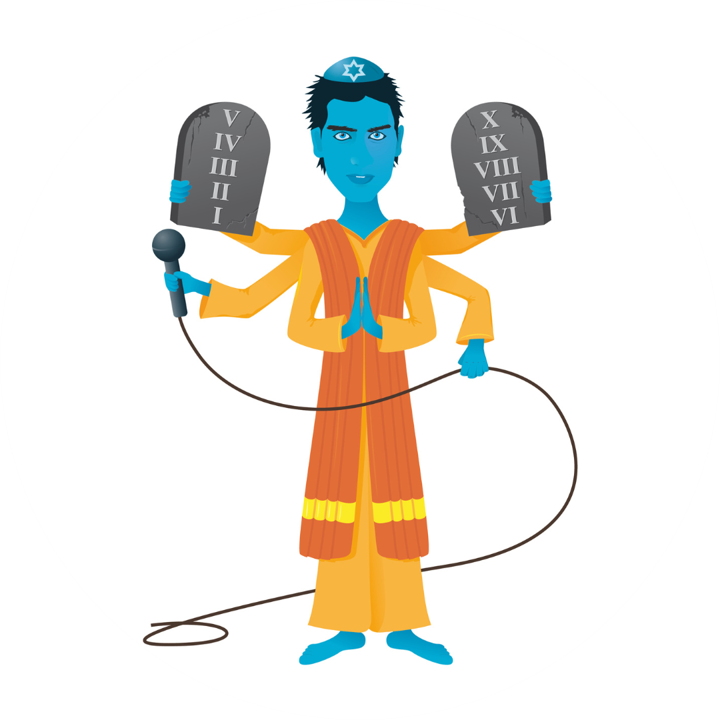
Can you share a story from your journey that illustrates your resilience?
There’s an old adage in showbiz: “The show must go on.” Over the years, I’ve learned just how true—and how demanding—that phrase can be. It’s hard to pick just one moment, because resilience in comedy isn’t a one-time event; it’s a constant requirement.
I’ve had shows where not a single audience member showed up. It’s disheartening, but the next day, I’m back at it—producing, promoting, performing. If only a handful of people show up, I still give them the best show I can. If you’d perform at your peak for a room full of industry scouts, then you owe the same energy to the folks who bought tickets, made the effort, and showed up.
There have been nights when the mic went dead mid-set, or the speakers failed. You stay calm, crack a joke, stall with a story, improvise while someone fixes it—and carry on. But one moment stands out vividly.
One night before a weekly show in Oakland, I was adjusting the spotlight when the cable shorted out and sent a jolt of electricity through my hand. The shock was so severe, the skin on my palm turned black and cracked open. My right hand was scorched. I had every reason to go home, but I didn’t. I switched the mic to my left hand, hosted the entire show, and got medical treatment after the final applause. For weeks, I performed with a bandaged hand until I healed.
Another time, I lost my voice right before a tour show. No backup, no understudy—just me, a raspy whisper, and a room full of people. I powered through as best as I could, projecting with everything I had, making the croak part of the act.
Things can go wrong anytime in live comedy. But in every instance, I remind myself: be kind to the technicians trying to help, don’t panic, and always do your best to deliver a show. That mindset—respect for the audience, for the craft, and for the people behind the scenes—is what’s kept me going all these years.

Is there something you think non-creatives will struggle to understand about your journey as a creative? Maybe you can provide some insight – you never know who might benefit from the enlightenment.
One of the hardest things for non-creatives to grasp—especially early in a stand-up career—is how illogical the grind can look from the outside.
In the beginning, I’d drive two hours after a full day of work just to do five minutes on stage… then drive two hours back, only to wake up early and do it all over again the next day. No pay. No perks. Add up the gas, tolls, parking, time—and it makes zero sense financially. But artistically? It’s everything. You chase that five-minute high like your life depends on it.
Stand-up comedy has taken me to places I never would’ve gone otherwise—remote corners of the country, dive bars, pizza joints, back rooms of bookstores, smoky basements with flickering lights and folding chairs. You’re often performing in less-than-glamorous spaces, surrounded by other comics who are also hustling, hanging out at shows just to network or catch the attention of a booker.
At one point, I was doing up to three shows a night, six nights a week—until my body finally tapped out and I got sick. That’s the kind of pace the craft demands when you’re starting out.
The process is all trial and error. You write a joke, test it, tweak it, bomb with it, polish it. Different crowds react differently, so you have to find ways to make it work consistently across rooms. There’s a constant cycle of failure—jokes that flop, entire sets that fall flat—and the only way through it is to keep writing, keep performing, keep evolving.
What’s unique about stand-up is that it doesn’t offer the same indulgences as other art forms. At a music concert, the crowd might chant for an encore. In dance, repeating a great routine can earn even louder applause. But in stand-up? No one wants to hear the same joke twice. Not only do they not want it—they’ll tune out. The moment a punchline feels recycled, it loses all its magic.
There’s a saying that insanity is doing the same thing over and over and expecting a different result. In comedy, it’s the opposite: doing the same thing and expecting the same result is the real trap. Because one joke might kill one night and die the next. There are no guarantees.
That’s the creative journey we sign up for. It looks irrational from the outside, but for those of us who live it, there’s a kind of quiet madness that fuels the joy of getting it right—even just once.
Contact Info:
- Website: https://www.mahatma-moses.com
- Instagram: https://www.instagram.com/mahatmamoses
- Facebook: https://www.facebook.com/mahatmamoses/
- Youtube: https://www.youtube.com/@MahatmaMoses
